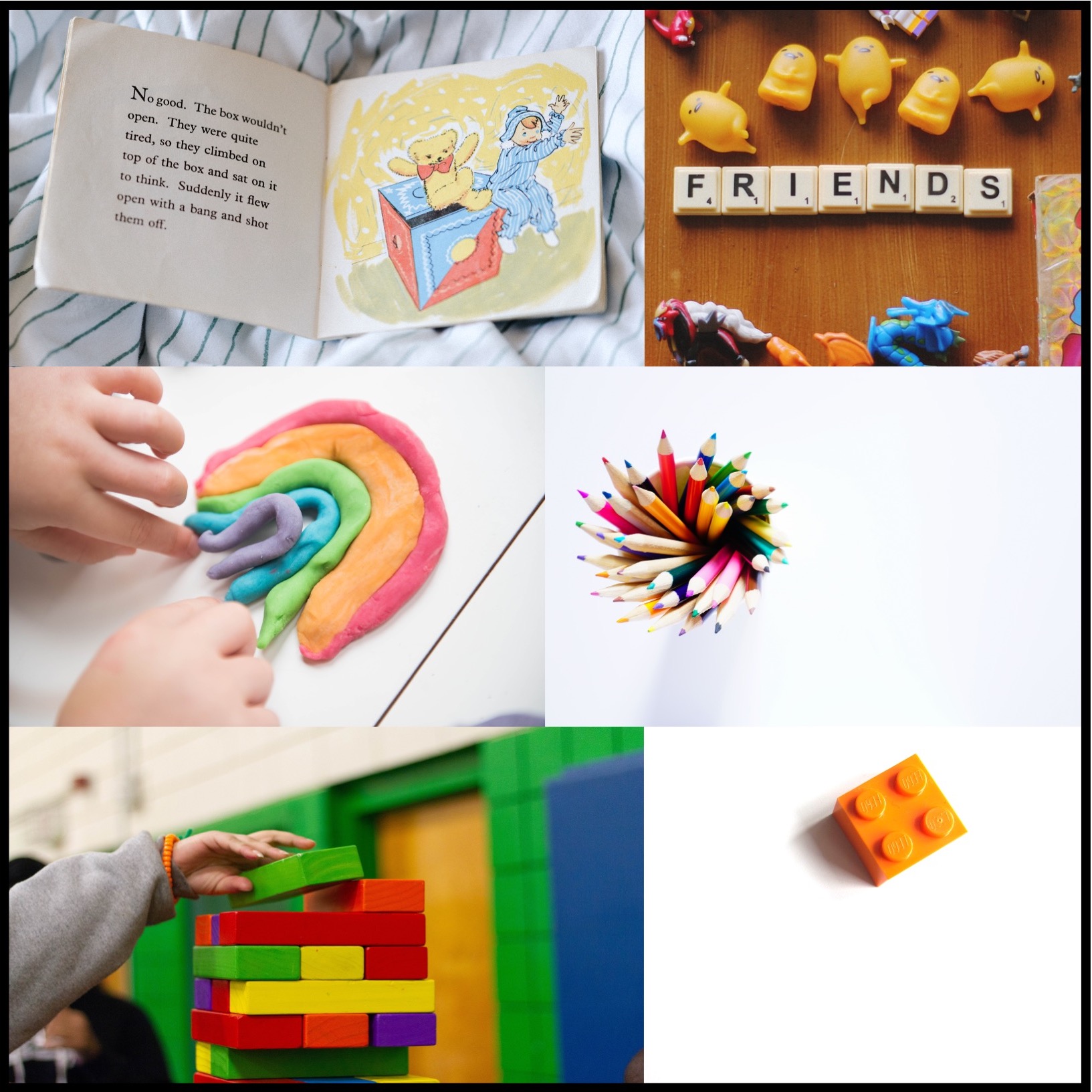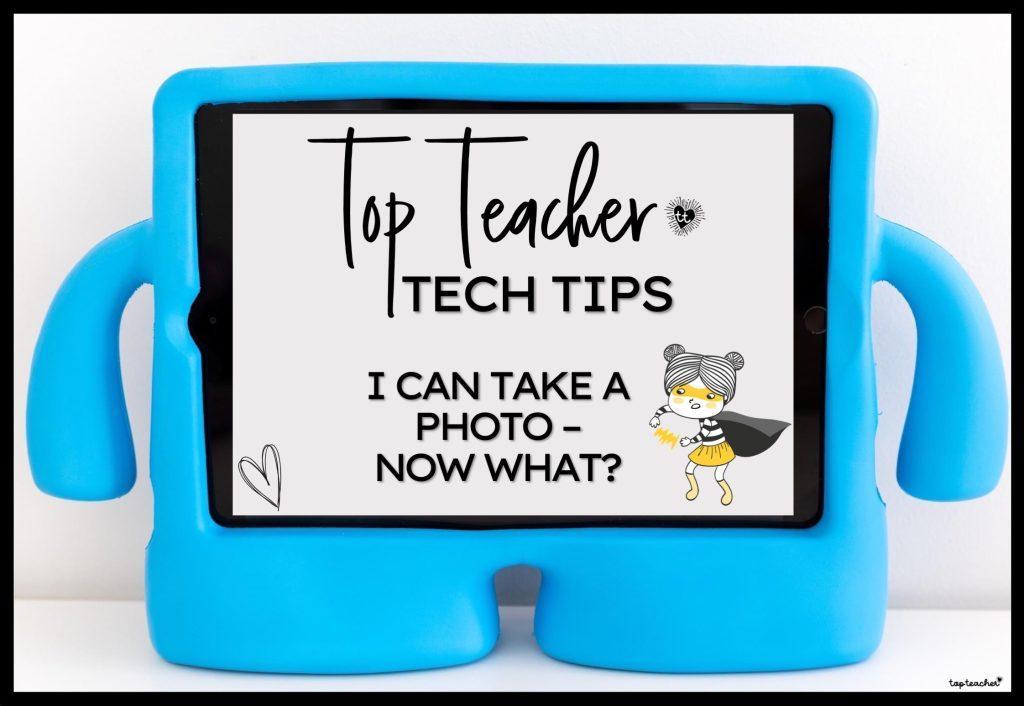“Children have powerful imaginations and a unique way of looking at the world. Photography gives them the opportunity to observe and explore their surroundings more closely. With a camera and a basic knowledge of how to take and edit photos, even young children can capture and share what they see, feel, and know.”
(Everyone Can Create Teacher Guide Early Childhood – Apple Education)
Once you have taught your students the ✨super✨ valuable skill of taking a photo properly with an iPad (for tips on how to do this – read this blog post) – a whole new world of creative and meaningful learning opportunities awaits you and your students. The iPad camera app is a treasure trove of opportunities that can fit into any curriculum area, with any age student!

There are SO many ways you can incorporate photography with the iPad into your classroom 🤯 One of my favourite ideas is asking students to capture their “One Best Photo”. Choose a topic that is meaningful to your students – such as ‘Why is our school a great place’ – (or start smaller with ‘Why is our classroom a great place’) and set a challenge where students will capture an image that is their own “One Best Photo” to reflect the chosen topic. It would be worthwhile for you to have taken some examples first – be creative! Take a few closeups or black and white shots, play with composition; it may just give your students an idea to take the photo a little differently! Students then take turns over a period of time to capture their best photo. These could then be displayed in a gallery in the classroom.


Another easy way to start with using the camera in the classroom is by assigning a daily class photographer. This can effortlessly be added to your list of classroom jobs, and you can assign tasks to the photographer during your investigation or play sessions. If this doesn’t suit your classroom needs, then you could consider setting tasks or challenges to a group of students during math/literacy groups or other rotations.
Read on for a HUGE list of tasks or challenges you could set your students across the curriculum!

You could challenge your students to take a photo of:
💛 numbers (or 2D shapes, 3D objects, colours, symmetry etc) you see in the environment.
💛 a group of objects for the class to count.
💛 different ways to represent a chosen number.
💛 blocks, lego, playdough or other loose parts made into the shape of a numeral.
💛 a group of objects that could all be grouped because of the ways they are similar.
💛 a repeating pattern made from a group of objects.
💛 something that is taller or shorter (or heavier/lighter, about the same as) than you? Than a teddy? Than a long block?
💛 an item that has been measured with cubes.
💛 a group of containers in order of their capacity.
💛 a toy representing positional language – such as a teddy behind/in front of/on top of a block.

You could challenge your students to take a photo of:
💛 letters of the alphabet found in the environment.
💛 words you know found in the environment.
💛 items starting with a particular letter or sound.
💛 labels around the classroom.
💛 the cover of a favourite book.
💛 2 things that rhyme.
💛 something that has 1/2/3 syllables.
💛 blocks, lego, playdough or other loose parts made into the shape of a letter.
💛 signs or other environmental print around the classroom/school.
💛 a storybook character that has been created in the play dough/drawing/collage area.
💛 a student doing something to represent a verb.
💛 a book you can make a connection to.

You could challenge your students to take a photo of:
💛 something we can see, smell, hear, taste or feel.
💛 something that is living/non-living.
💛 a habitat for a living thing that has been made with play dough/blocks/collage etc.
💛 a selection of things that ‘living things’ need.
💛 items made from wood, paper, fabric, plastic, glass and metal.
💛 objects that are made from 2 different materials.
💛 objects that could/couldn’t be blown by the wind.
💛 objects that would be suitable/unsuitable to be left outside.
💛 objects that will float.
💛 objects that change state over time – taking photos as they change (ie. ice in the sun).
💛 the daily weather and its features.
💛 things that can roll/slide/stack /spin etc.
💛 objects that can be pushed or pulled.
💛 different sources of light.

You could challenge your students to take a photo of:
💛 parts of your school that have a special historical significance.
💛 different buildings within your school.
💛 a series of photos throughout the day showing a sequence of events.
💛 the map or directional signposts of your school.
💛 pictures of items from the past.
💛 examples of students caring for a special place.
💛 a representation of the members of their family.
💛 a map or globe to show where the student was born.
💛 a representation made with collage/blocks/drawing materials that shows a favourite celebration.
💛 a map of the classroom/school made with blocks/lego.
Once your students have taken on this task/challenge, you could project their images onto the electronic whiteboard and have the students discuss the reasoning behind the images taken.
In future blogs I am excited to share with you some free apps that can take a simple photo to the next level, but for now, why not give some of these photography topics a go in the classroom!


